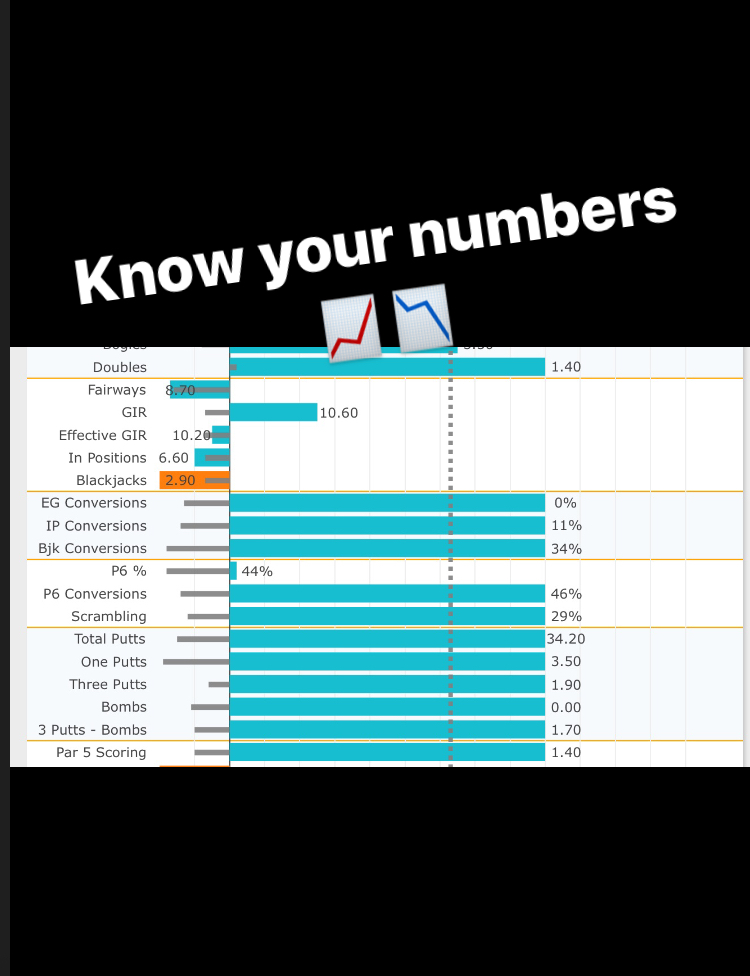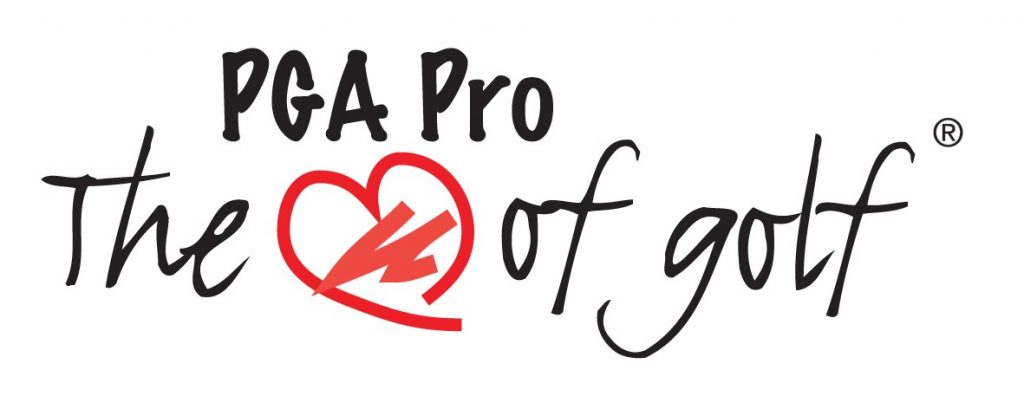We all know the importance of setting goals. They need to be Specific, Measurable, Achievable, Realistic and Timed. Having them written down is very powerful, but how do we set them in order to play better golf?
It all starts with knowing your numbers. When critiquing your game and choosing areas to work on its important to make these decisions based on the facts as much as possible. In this post I’m going to give you a behind the scenes look at how we use statistics to determine the most effective practice program for each player and how to set SMART goals.
Depending on what your aspirations are as a player, it’s very useful to evaluate exactly where you are with your game right now and work out exactly what stands between you and the player you know you can be.
We can do this by benchmarking. This is where we evaluate the level of each aspect of your game against the level you are working towards becoming. This can highlight the fastest route to take, improve your ability to design an effective practice program for and enable you to track your performance along the way.
The example below here is a player working towards playing professionally and thus we have benchmarked their stats with the PGA Tour Average Male. The picture below is their stats displayed through the software I use called ‘GameForge’. This is after they have played 10 rounds of golf over a three-month period. Let’s dig in and see how we can use these numbers to accelerate this players performance

At the beginning, this players goal was to improve ball striking. Over
these three months we began working on key areas on their technique to improve
just that, whilst making sure to record playing performances along the way.
(Player VS the PGA Tour Average Male)
Score relative to par: +6 VS -1
Fairways hit: 8.70 VS 8.68
GIR 10.60 VS 12
GIR proximity
Effective GIR (Inside 40ft) 10.20 VS 10.31
In Position (Inside 20ft) 6.60 VS 6.49
Blackjack (Inside 8ft) 2.90 VS 2.31
Straight away we can quantify how many shots we need to lower this
player’s scoring average by, and we can begin to see exactly how this can be
done. Starting with ball striking ability, which at the beginning was the
players main objective in order to lower their score. We can see that it is pretty
good! Their greens hit in regulation is nearly there and on the greens they do
hit their proximity to the hole is good enough to achieve a lower scoring
average. So, will continuing to prioritize ball striking in practice help lower
their score and bring them closer to setting effective goals and achieving
them?
Initially the player highlighted their ball striking as the main issue, and
whilst we did work on their technique, and it has improved, it’s unlikely it
would have developed that much in such a short time frame (3 months). Which
means the players initial analysis without recording their statistics may not
have been as accurate as they thought. And even though they have made progress,
it still doesn’t show up on their scoring average, and for competitive players,
a lower score is the aim of the game.
By looking at the conversions rates- This is where we can benchmark, of the
greens they have hit in regulation how many putts were converted from each
distance. It starts to get interesting
Between 20-40ft conversion rate 0% VS 11%
Between 8-20ft converted 11% VS 31%
Inside 8ft converted 34% VS 73%
BIP (Percentage of Birdies converted from inside 20ft) 16% VS 62%
From these numbers we can begin to see the fastest route to lowering
this player’s score and therefore, set their practice program accordingly. A
key stat here is from all putts for birdie inside 20ft, the conversion rate is
16% as opposed to the PGA tour average male which is just over 60%! This will
be an important KPI (Key Performance Indicator) for this player knowing
that they have enough opportunities to match this benchmark due to the
efficiency of their ball striking numbers.
On the greens they have missed in regulation we can also see how this player
performs in their ability to save par and minimize drop shots.
P6(short hand for chip shots on a missed GIR that finish within 6ft
of the pin) 44% VS 48%
How many of these were converted 46% VS 81%
Scrambling (how many times they get up and down to save par) 29% VS 61%
These short game numbers are telling and will provide this player with
another KPI which will determine their practice program and focus.
The putting stats can also be seen and will also serve as useful benchmarks.
Watching their trend over the next 10 rounds will determine a lot for this
player.
Total putts 34.20 VS 28.80
One putts 3.50 VS 7.23
Three putts 1.90 VS .48
Bombs (putts held outside of 20ft) 0 VS .44
What I hope for you to take from this is if you have been working hard
on your game and it’s not showing up on your scorecard it doesn’t necessarily
mean you’re not making progress. It might be that your ball flight has
improved, you’re hitting more fairways and greens but that it may be time to
investigate other aspects of your game by tracking some of the numbers I’ve
talked about above.
The fun part now is the player knows exactly what to do! They can set a
specific and measurable goal- Improve conversion rate inside 20ft by
40%. So how do we do that? It may be that we need to improve ability to
start the ball on line, manage speed control or ability to predict the break.
Technical, mental or even equipment may be the answer, but that’s for another
post! The key here is, whether you want to break 100, 90, 80, 70 or even play
professionally, when you start tracking your KPI’s you will know for sure if
you are going in the right direction or not, which in of itself is the
motivation you will need during the often difficult process of improvement.
#lowestscorewins
I hope you enjoyed this insight into what the start of the coaching process looks like for a player and found it useful. Feel free to get in contact if you have any questions or would like me to address another subject you are curious about. As always you can find me by Email, Facebook, Instagram with ‘Phillip Tanham Golf Coaching’ or in Marbella Golf and Country Club, Spain.
Speak soon,
Phil

